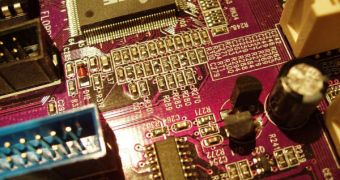Scientist have known for a long time that atoms placed in various specific conformations have the potential to make electrons around them dance in a “quantum” way, but have until now failed to create such an alignment. But the February 13th edition of the journal Science hosts a new scientific study that claims an international team of investigators has managed to do just that, creating a material with properties that have the potential to revolutionize computing and electronics for good.
The team includes researchers from Germany, Switzerland and the United States, and has been coordinated by the University of Princeton. “We believe this discovery is not only an advancement in the fundamental physics of quantum systems, but also could lead to significant advances in electronics, computing and information science,” Princeton assistant professor of physics Zahid Hasan, who is the leader of the international team, explains.
“As a technical achievement, or a series of physics achievements alone, it is pretty spectacular,” 1977 Nobel Prize in physics laureate Philip Anderson, who is now the Joseph Henry Professor Emeritus of Physics at Princeton, adds.
“This discovery has the potential to transform electronics, data storage and computing. The spin-sensitive measurement techniques developed here may shed light on other important fundamental questions in condensed matter physics such as the origin of high-temperature superconductivity,” Thomas Rieker, the program director for the Materials Research Science and Engineering Centers at the National Science Foundation, agrees.
The new material that has got everyone so excited is actually a crystal made up of an antimony alloy, completed with small amounts of the chemical bismuth. By observing its structure on an atomic level, using modern high-end techniques, members of the team have been able to realize that the conformation of the material triggers a sort of “synchronized dance” in the electrons surrounding them, which resembles theoretical motion patterns in quantum elements.
“This quantum weirdness – a coordinated twist in the spin of electrons even though there is no magnetic field around – is what we've been searching for by fine tuning our experiments over the last few years. It's a very fundamental piece of new physics – it goes beyond what you would typically learn in a quantum physics textbook. In principle, you can use this new quantum dance of electrons to construct a very bizarre electronic circuit,” Hasan concludes.

 14 DAY TRIAL //
14 DAY TRIAL //